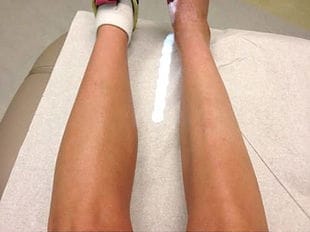Sometimes the most frustrating part of rehab after surgery is not the first couple of weeks afterwards when you’re agonizingly working on getting better range of motion. The hardest part about rehab after surgery is waiting to get back to doing the activities that you love to do. If you’ve been immobilized for any length of time, you’re just itching to get back to being yourself.
Once your body heals you’ll be off to the races, right? Not so fast. There’s a lot that goes into the healing process and successful rehab after surgery includes giving you the best chance to not re-injure yourself. Here are a couple of reasons why patience may be stressed by your rehab team.
Three things that occur during immobilization (other than decreased range of motion):
-
Muscle atrophy
-
Decreased ligamentous strength
-
Motor control changes
Muscle atrophy occurs quickly. Within days you may notice that your limb is simply looking smaller. Having muscle atrophy means that when you do get back to sport, if you do not spend the appropriate amount of time re-strengthening these muscles you are putting yourself at risk for re-injury. Let’s take the knee as an example. If you’re unable to decelerate and make a cutting move you may end up simply collapsing forward, or you will be able to sense the weakness and you’ll instinctively slow down and move more cautiously which can hinder your playing as well as your mental confidence. Building a pattern of decreased confidence in the strength of your leg is not a great idea as most sports have a great deal of the game played right between your ears.
Research has suggested that a long period of immobilization can contribute to a 50% decrease in the ligaments that surround a joint. This is important to know, because if you’ve been immobilized and you’re not feeling like you’re getting better, and a provider insists on continuing to stay immobilized, you may want another opinion. One of the worst examples I can think of is when I had a patient who was immobilized for 8-9 months for an ankle sprain! Within weeks of working with this patient their condition was 90% resolved and within a couple of months they were back hiking. The point here is that prolonged bracing can leave you prone to additional ligamentous injury when you try to get back to sport.
Motor control changes can happen both as a result of atrophy, and because you learn to compensate for being braced. When you compensate for a long period of time you literally build patterns into your brain that are incorrect. These can be difficult to correct and leave you questioning if you ever knew how to move correctly, I mean, how can walking be that hard? The problem arises when you take that movement to the field. It may not lead to injury today or tomorrow but somewhere down the line it may.
There are two main points that you should take away from this article.
-
Prolonged bracing is not always a good option, and rarely is.
-
Be clear with your rehabilitation team on what your goals are and make sure that your team actually knows how to get you back to the field. The easiest way to make certain of this is to have a conversation about how you can expect your treatment to progress, when you will be back to the field, and how they will know when you’re ready. There should be some sort of skills assessment with this piece!
-
Temporary immobilization is necessary in many cases. The amount of time varies from case to case but rarely does it go beyond a couple of months.
The bottom line is when you’re trying to rehab from an injury make sure you’ve got a great team around you. If you’re not satisfied with your current situation give us a call. We help people get better and get back to doing what they love every single day.


